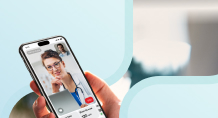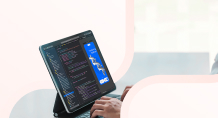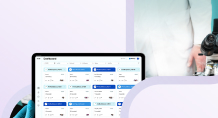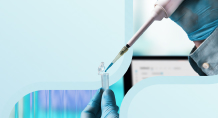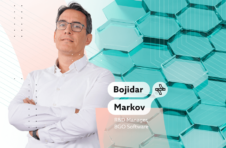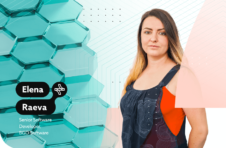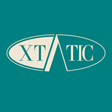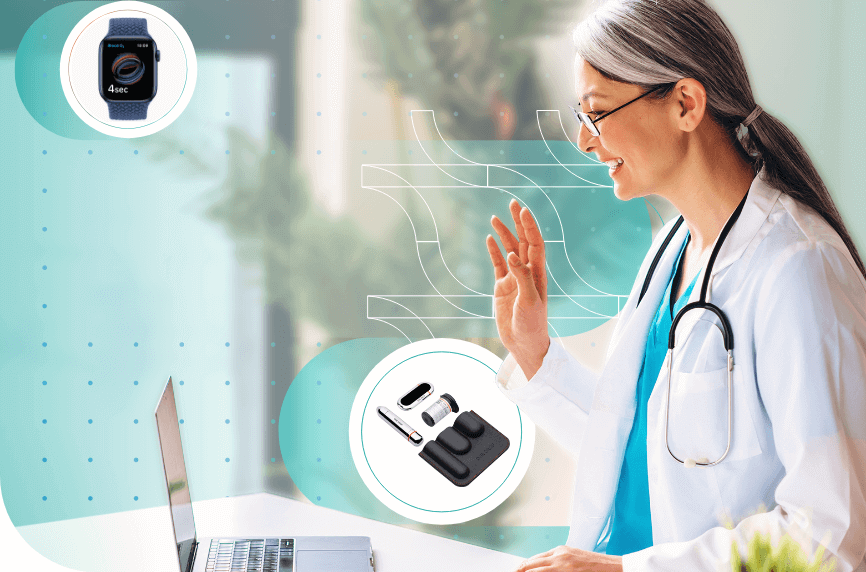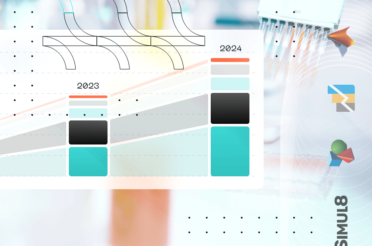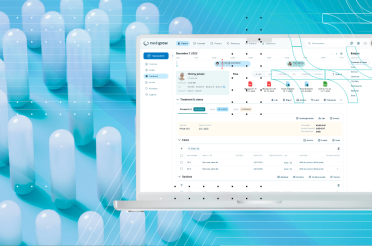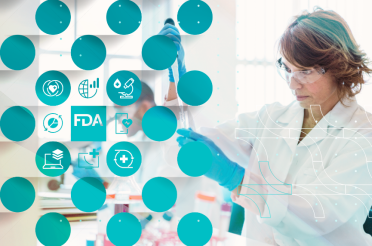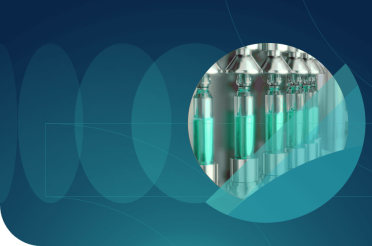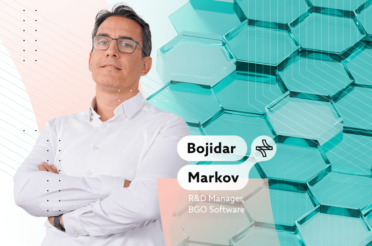Distance has always been an obstacle when healthcare is concerned. Many people have to go through great distances to access healthcare facilities. Many patients have difficulties contacting their healthcare professionals and have to search for remote healthcare.
In this environment, the Internet of Things (IoT) healthcare devices enable healthcare professionals to monitor patients remotely instead.
How does IoT work: short explanation
IoT is essentially a network of physical devices linked through the internet. Said devices can be anything electronic, be vehicles, home appliances, or for medical purposes – wearables and even implanted medical devices that can help with real time health monitoring. Such devices often use radio frequency identification (RFID) that helps them be automatically identified and tracked.
The connected devices collect data, exchange it and in the end – analyze it. Thus they create a bridge between the physical and digital worlds. Patient care is truly revolutionized by the introduction of real-time monitoring, personalized treatment plans, and improved medical decision-making, ultimately leading to better health outcomes and more efficient healthcare delivery. IoT devices have especially diverse applications, potentially becoming the new standard in medical care.
This connectivity enables various features such as:
-
Task automation;
-
Remote healthcare;
-
Data collection;
-
Data analysis for suggesting solutions;
-
The creation of patient healthcare reports.
Those features are bound to change the medical industry significantly. Let us see how.
IoT in healthcare: facts and stats
The IoT has proven to be the future of the medical industry and thus has gradually been expanding its market share in recent years. In 2023, the global IoT in healthcare market was valued at $139.74 billion, and it is expected to grow to $822.54 billion by 2032.
More than 30 billion IoT-connected devices are currently operating worldwide, many of which are IoT wearables in healthcare for real-time patient data collection and monitoring. [1]
Researchers have proven that IoT devices can be especially effective in reducing hospital readmission rates, reaching up to 25%, which translates to high quality care and operational efficiency.
Use cases of IoT in healthcare
The IoT is transforming healthcare in many tangible ways by introducing innovative ways to approach traditional tasks such as monitoring, diagnosing and treating patients. The patients’ experiences are significantly improved through these innovations.
Not only is their care improved, but they profit by the benefit of severely reduced costs. IoT achieves that in many ways. Here’s an in-depth look at key IoT applications in healthcare.
1. Remote patient monitoring (RPM)
Wearable devices such as smartwatches, phones, or wearable sensors automatically collect health metrics. These remote patient monitoring devices collect healthcare data such as body temperature, blood pressure, body-fat percentage, etc, while recommending medical treatment or generating alerts based on that information.
Many conditions require continuous health monitoring, and collecting data would require a stay at the healthcare facility. This is an issue that RPM largely fixes by providing a stream of constant information to information to healthcare workers who can provide quality remote patient care to even the most isolated of communities
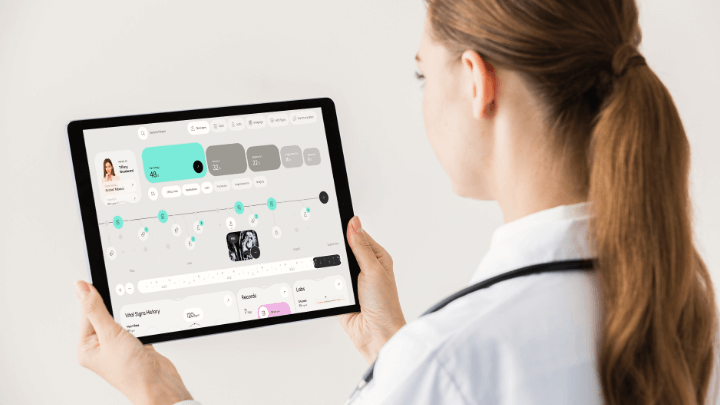
2. Glucose monitoring
Glucose monitoring devices include embedded or wearable sensors that automatically monitor a patient’s glucose level, keep a record of the data, and similarly alert medical professionals. Some devices which can be embedded even have the functionality of automatically supplying insulin when needed.
More importantly, these medical devices assist patients in monitoring their sugar levels themselves more. Some devices can even automatically regulate insulin levels, which leads to an increased quality of life. All of which lead to more precise monitoring and patient care.
3. Heart-rate monitoring
Unlike glucose monitoring devices, IoT devices monitoring the heart-rate of a patient are already portable. Many devices like smartwatches or IoT sensors already provide effortless constant monitoring of a person’s heart rate or other vital signs. Thus, data can be collected even while the patient is sleeping. That data can then be stored in the patient’s electronic health records.
Monitoring the fluctuation of the heart rate is more challenging when compared to glucose monitoring since it is affected by various activities during the day. Continuous cardiac monitoring allows patients to avoid stays at healthcare facilities and still have their condition be monitored. These devices can also serve as emergency response systems that can alert health workers should the heart rate be out of norm.
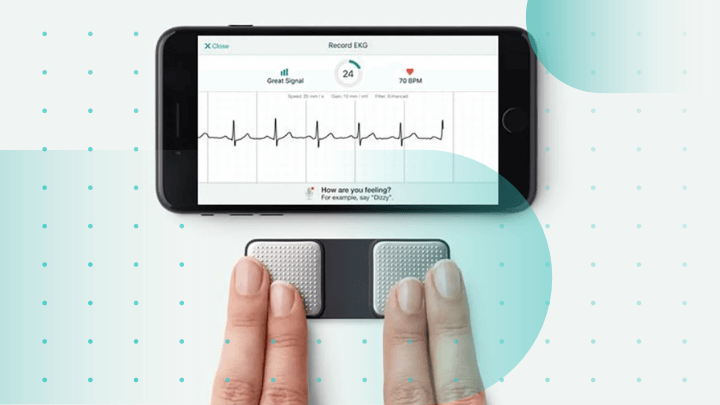
4. Hand hygiene monitoring
Lately, many hospitals and other healthcare facilities are using hygiene monitoring IoT devices to ensure proper standards of cleanliness. People use these healthcare devices to remind them to sanitize their hands at regular intervals or whenever they enter a specific room.
Many hospital rooms often house critically ill patients. Introducing any pathogens may further complicate the conditions of these patients. Even if working with relatively healthy patients, proper decontamination procedures are necessary for the work of any hospital.
Hand hygiene IoT health devices can remind people to wash their hands, but they can also give instructions on how to clean their hands or sanitize objects. Where people use these devices, there is an estimated 60 per cent reduction in infection rates.
5. Depression or mood monitoring
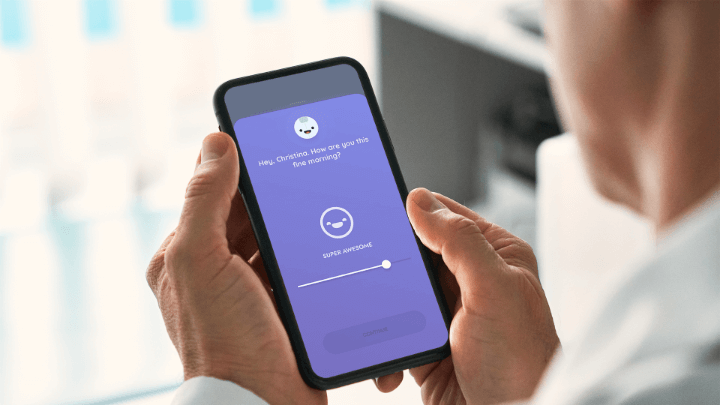
By monitoring the heart rate, blood pressure, and other biometric data, Internet of Things healthcare devices can infer information about the patient’s current mood and mental health. More advanced IoT devices can even track the movement of a person’s eyes.
Traditionally, the continuous patient monitoring of mental health is quite challenging. Medical professionals must periodically ask about the patient’s feelings to determine their diagnosis. The experts, however, cannot predict the mood swings of patients or the latter may decide to omit some information from their medical records or refuse to share their medical history with the professional.
The main advantage of IoT devices is that they rely on objective biometrics rather than the testimony of a person. These health indicators are not controlled by the patient and serve as a good indication of a person’s mental health. Further, patient monitoring may continue while they are sleeping as well.
6. Parkinson’s disease monitoring
A surprising use of IoT technology in healthcare is in its use for the treatment of patients with Parkinson’s disease. These healthcare devices can track the symptoms of Parkinson’s disease and the fluctuation in the severity of these symptoms throughout the day.
Symptoms of Parkinson’s are fluctuations and thus require constant tracking. Usually, hospitals require patients to stay in healthcare facilities for a prolonged time to monitor them effectively. IoT devices automatically collect patient data and make this process a lot easier. This remote monitoring system takes several steps for improving patient outcomes. It not only provides a significant reduction of healthcare costs but also enables patients to live more independently by not needing to stay in hospital rooms for an excessive amount of time.
7. Connected inhalers
These IoT devices are essentially smart inhalers connected to a phone app. Their purpose is that they can provide periodic visual or audio reminders to take medication. They can even give instructions on the proper use of such inhalers.
The main issue with illnesses such as asthma or COPD is that they involve sudden attacks with no prior indication. Two out of three deaths related to asthma can be prevented through timely reviews of care, better medication, or better management of the condition in general. (3)
8. Ingestible sensors
Much as the name suggests, these medical devices are small sensors that are ingested and designed to either pass through or dissolve in the digestive tract. A lot of these devices resemble the shape of a pill that a person must swallow.
Their purpose is to collect various biometric data, such as determining the PH level of the stomach or identifying the presence of internal bleeding.
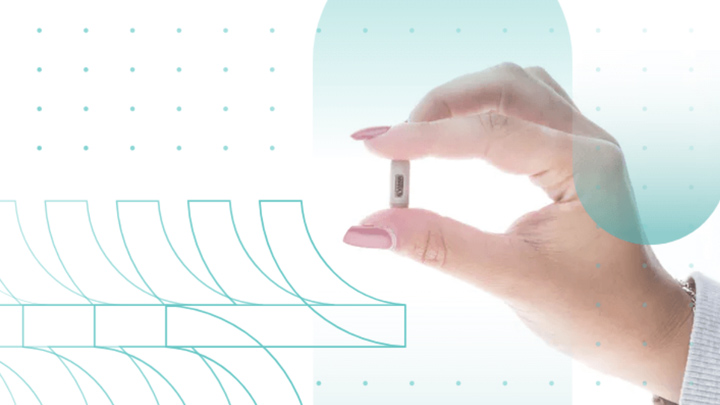
Using digestible sensors enables patients to choose a much less intrusive procedure. Unlike traditional methods, using ingestible sensors is much less messy and disruptive since the sensor can either independently pass or dissolve in a patient’s digestive tract. The process is smoother since a medical professional does not need to manually insert the sensor into the digestive system. Recent advancements in healthcare technology have even suggested the possibility of easily ingestible yet small pills being developed.
9. Connected contact lenses
Unlike standard contact lenses, these connected devices include a camera and a sensor. These Iot lenses provide better vision and can monitor for early symptoms of diseases.
The main issue is that the eyes naturally weaken or develop certain diseases over time. Sometimes these diseases can progress for a long time without the patient searching for medical attention. Connected contact lenses can look for early signs of certain eye diseases. Yet, some general medical conditions can also be detected with IoT lenses as well, such as the early signs of diabetes through the glucose levels of the tears.
Lastly, the presence of cameras in the lenses enables patients to take pictures with their lenses, which is why the technology is developed even by companies working outside the healthcare sector.
10. Robotic surgery
A new way of conducting surgeries is through IoT medical devices. Surgeons can inject small devices like Internet-connected robots into the human body to perform surgeries. Professionals use these to reduce human error when the operation requires precision.
The main issue is that the incisions required to conduct surgeries by hand are bigger when compared to their robotic counterparts. Human hands need more space when they perform complex procedures.
When using these IoT robotic devices, surgeons can do more precise and effective operations. The incisions are smaller due to easier insertion of the IoT devices. All of which leads to a less invasive procedure for the patient and shorter recovery times.
The main requirement for such devices is that they must be small and reliable enough to perform complex procedures. They must also be able to accurately analyze the conditions inside a person’s body and formulate an appropriate decision for the surgery.
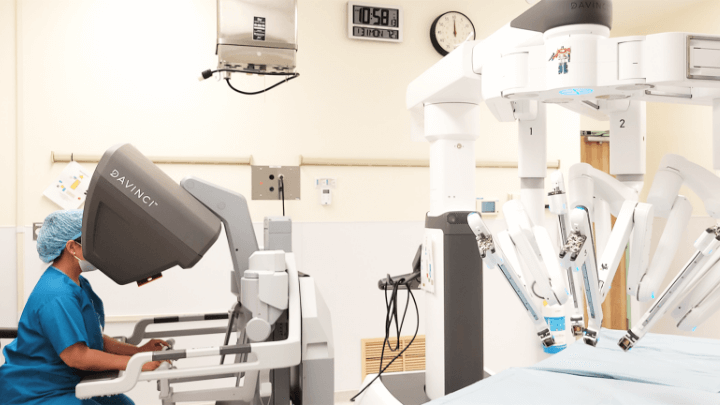
Benefits of IoT for healthcare providers and patients
What can be gathered from all the use cases is that all IoT healthcare solutions provide a certain level of control that medical professionals and patients alike currently lack. Through the constant stream of medical data collection, both parties can have a better idea of the nature of the issues that the patient has.
Here are some of the benefits:
- Constant monitoring has the unique benefit of being immune to human error. Without having the data collected, a patient would be susceptible to missing their dose, forgetting to report something to their medical professional and even deciding to ignore certain health issues. IoT devices do that work for them in a data-driven way.
- Some patients are susceptible to hypochondriac use of medicine that could damage their health. IoTs make sure that any dose is just the right amount. IoT devices prevent this other extreme from coming to fruition;
- Medical professionals benefit from reduced paperwork and bureaucracy, because IoT devices digitize all reliable data.
- They also can be used to perform easier and more effective interventions. Examples would include the ingestible sensors and the robot surgeries.
The real value of IoT devices lies in their ability to mitigate the limitations of human oversight in healthcare. As a result, IoT-enabled devices not only streamline clinical workflow when doing healthcare operations but also create a more efficient, personalized, and preventive model of care, driving a paradigm shift in modern healthcare.
Solutions and technologies needed for implementation
The Internet of Things (IoT) faces significant hurdles due to the lack of established infrastructure, a common obstacle for pioneering technologies. Successful integration of IoT into healthcare demands critical advancements to ensure its hardware seamlessly merges with medical practice.
Wireless communication: The backbone of IoT
A robust wireless communication infrastructure and an uninterrupted sensor network, such as 5G, are vital for real-time data transmission.
While 4G already reaches remote regions, including parts of the Global South, the introduction of 5G is expanding rapidly. This includes applications as ambitious as enabling connectivity on airplanes under EU regulations.
Cloud computing: The data hub
Large-scale cloud storage is equally essential for managing the massive volumes of health data generated by IoT devices.
Similar to the growth of 5G networks, cloud computing is transitioning from a premium service to a standard necessity in technological ecosystems.
AI: The key to reliability
The largest obstacle may prove to be the development of Artificial intelligence systems advanced enough to put out reliable enough data.
IoT and AI in healthcare are intrinsically linked. Machine learning algorithms are needed to analyze data continuously, detect anomalies, and generate actionable insights for healthcare providers.
Those innovative health care systems must be 100% robust before implementation, as any mistake made by the algorithm could have a fatal impact on patient health.

Whether you’re a startup, a Fortune 100 company or a government organisation, our team can deliver a solution that works for you.
BGO Software
Implementation roadmap planning
Implementing IoT technology in healthcare is a multi-step process requiring meticulous planning and collaboration between stakeholders. Below is a detailed roadmap for healthcare business owners and decision-makers.
1. Assessment of Current Systems (1-3 Months)
What it includes:
- Conducting a comprehensive audit of existing digital systems, such as Electronic Health Records and analytics platforms.
- Identifying gaps that IoT can address (e.g., patient monitoring, medication adherence, asset tracking).
- Engaging key stakeholders, including IT teams, healthcare staff, and patients, to define clear goals for IoT adoption.
Pitfalls to avoid:
- Ignoring staff input or focusing solely on technical aspects without considering user-friendliness.
2. Strategic Planning and Goal Setting (1-2 Months)
What it includes:
- Setting measurable objectives, such as reducing hospital readmissions or improving remote monitoring.
- Defining Key Performance Indicators (KPIs) to measure the success of IoT implementation.
- Securing funding and stakeholder buy-in.
Pitfalls to avoid:
- Setting overly ambitious goals or neglecting regulatory compliance requirements.
3. Establishing a Robust Network Infrastructure (3-6 Months)
What it includes:
- Upgrading Wi-Fi, 5G, or LoRaWAN networks to handle IoT device connectivity.
- Investing in scalable cloud solutions for real-time data storage and analysis.
- Integrating IoT gateways to link devices with the central data repository.
Pitfalls to avoid:
- Underestimating data load or relying on outdated network infrastructure.
4. Cybersecurity and Compliance Setup (2-4 Months)
What it includes:
- Implementing advanced encryption for data transmission.
- Setting up multi-factor authentication and device identity verification.
- Conducting regular security audits to ensure compliance with regulations like HIPAA or GDPR.
Pitfalls to avoid:
- Overlooking security measures in favor of speed or cost savings.
5. Developing and Testing IoT Solutions (6-12 Months)
What it includes:
- Collaborating with tech vendors to develop customized IoT devices, such as wearable health monitors or smart medication dispensers.
- Conducting controlled pilot programs to test solutions in real-world scenarios.
- Gathering feedback from users to refine the system.
- Agile development cycles for iterative improvement.
- Beta testing with small groups of patients and staff.
Pitfalls to avoid:
- Rushing to market without addressing feedback or technical issues.
6. Full-Scale Deployment (3-6 Months)
What it includes:
- Rolling out IoT solutions across healthcare facilities or targeted patient groups.
- Training staff to use IoT devices effectively.
- Providing technical support to ensure seamless integration.
Pitfalls to avoid:
- Insufficient staff training leading to resistance or misuse of IoT devices.
7. Continuous Monitoring and Optimization (Ongoing)
What it includes:
- Using analytics tools to track device performance and patient outcomes.
- Conducting periodic updates to IoT systems to ensure compatibility with new technologies.
- Creating feedback loops to incorporate user suggestions for improvement.
Pitfalls to avoid:
- Neglecting long-term maintenance and updates, leading to system obsolescence.
It’s important to recognize that each step in this roadmap is a specialized field of expertise. From network infrastructure to cybersecurity, solution development, and patient care, every phase demands a tailored approach, meticulous planning, and skilled professionals.
While this roadmap provides a structured guide, it is not an absolute blueprint. Each organization’s unique needs, existing capabilities, and challenges will shape the process.
Success lies in adapting these steps to your context, seeking expert input, and remaining flexible to changes. Embracing this dynamic approach ensures that your IoT integration is both impactful and sustainable, leading to better outcomes for patients and healthcare providers alike.

Learn how IoT can transform your services with expert advice
Discover and compare the IoT solutions available to your and use the expertise of BGO Software’s specialists to find out how to implement them to your practice.
IoT system implementation challenges
The roadmap we present still has to deal with a large array of challenges before itself, particularly in the area of data security and accuracy.
Several challenges can be identified. One of them would be the efficiency of IoT devices and the provided data. Some devices that instruct patients, while helpful, do not have actual means of forcing the patients to follow the suggestions. Such is the case with hand sanitizing reminders or non-automatic insulin reminders.
The accuracy of the data may be put into question as well. Although advancements have improved device size and efficiency, accuracy remains an issue, especially in heart rate and depression monitoring, where medical IoT devices may lack the precision of hospital-grade medical equipment. These devices can provide around 90% accuracy, which is often sufficient for most users, but the balance between sensitivity and reliability remains tricky.
The elephant in the room is the major concern about the constant monitoring of sensitive patient data, which could be the product of misuse, hacking or data mining.
Protected health information (PHI) is a prime target for cyberattacks, as the consequences of a data breach in health systems could be severe – not only could it expose sensitive medical information, but in some cases, it could even compromise patient safety by interfering with device functionality.
In order to address such concerns, healthcare providers ought to comply with existing and future protection regulations such as the EU General Data Protection Regulation (GDPR) or the US’ Health Insurance Portability and Accountability Act (HIPPA). These legislations provide the needed framework for secure storage and transmission of data through methods such as encryption or rigorous authentication protocols.
That being said, the connectivity and scattered nature of healthcare IoT devices introduce an unseen vulnerability. Unlike traditional healthcare systems, the management of IoT devices is substantially more making them easily ignored. Ignored devices are prime targets for cyberattacks.
The future of IoT in healthcare depends on it adapting to those regulations. For these reasons, data security should be a primary concern for healthcare companies and healthcare organizations that have put the security and health of their clients in the first place. Clients should seek trusted companies with a cohesive portfolio of projects which are up to date with the latest protection standards and have access to high-quality medical resources and information.
It is evident from the above-mentioned security risks that even if the impact of IoT in healthcare is immense, it may expose sensitive data.
Therefore, it is in the best interest of the healthcare industry and patients to work with companies specialized in healthcare software. Among these companies, BGO Software stands as one of the leaders in this market.
Sources
https://www.fortunebusinessinsights.com/information-and-technology-industry [1]

